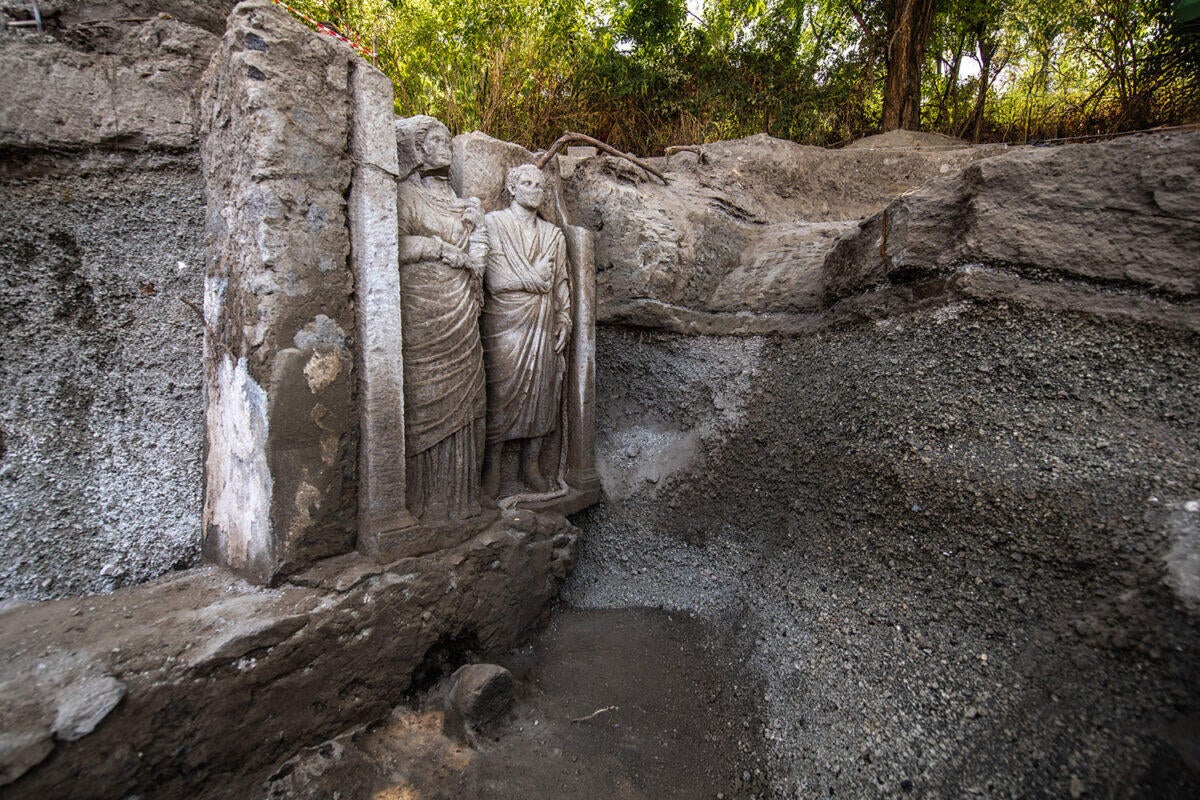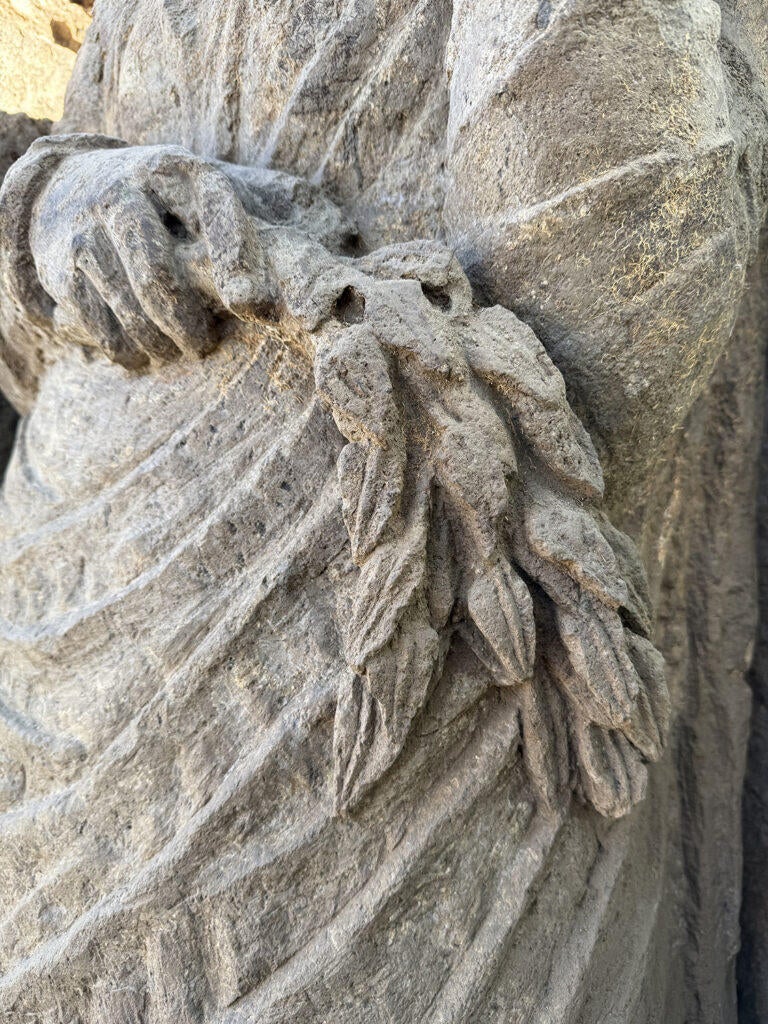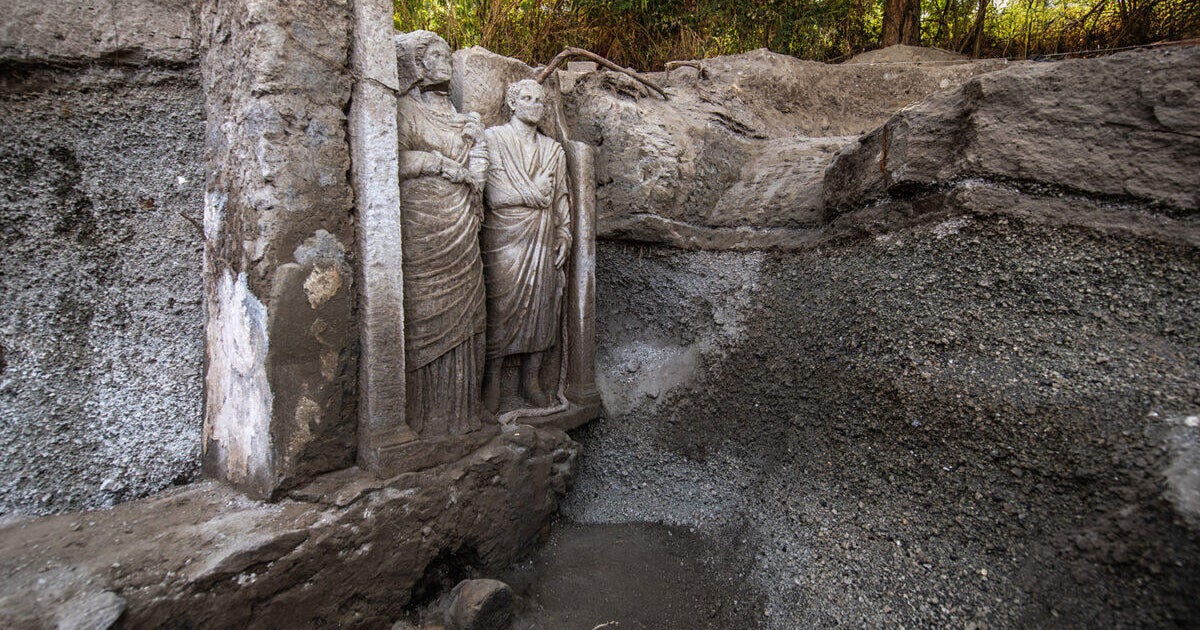Updated on: April 3, 2025 / 10:35 AM EDT
/ CBS News
2 statues discovered in Pompeii during tomb excavation
Life-sized statues of a man and a woman were discovered in a tomb in Pompeii, researchers said, thousands of years after a deadly volcano wiped out the ancient Roman city.
Researchers say the nearly life-size figures shed new light on life and religion in Pompeii, which was destroyed when Mt. Vesuvius erupted in 79 A.D.
The discovery was made while researchers from the archaeological site and the University of Valencia worked on an excavation focused on the necropolis of Porta Sarno, which was just outside the city, according to a news release. The site served as a burial ground, and was discovered in the 1990s during railway construction. Since 1998, researchers have found evidence of over 50 cremation burials in the necropolis. The current excavation, called “Investigating the Archaeology of Death in Pompeii,” has been ongoing since July 2024.

Alfio Giannotti
The statues were found in the southern half of the tomb, covered in pumice stone, according to a report by the researchers. The pumice stone indicated that this part of the tomb had been buried in earthquakes shortly before the eruption of Mt. Vesuvius.
The figures are a funerary relief, the researchers said. The couple may have been married and appear to have been “well-to-do,” according to the researchers.
“The delicacy and detail of the sculpture is remarkable,” the researchers wrote. “We can appreciate the careful carving of the hands, fingers and nails. We can also see the detailed work on the folds of the clothing and the ornaments: rings, bracelets, necklace, etc.”
The woman’s figure includes carved accessories that may indicate she was a priestess of Ceres, a Roman harvest and fertility goddess. Researchers said that it is likely only women from prominent families held this position. Priestesses wielded political power and had the highest social standing possible for Roman women. Statues of priestesses holding items associated with their positions are very rare in southern Italy, the researchers said.

Alfio Giannotti
The man is wearing a toga indicating that he is a Roman citizen. Both are depicted wearing rings that may be wedding bands.
Other relics, including ointment jars that may have held perfumed oil, a broken mirror and a coin depicting the sea god Neptune were also found in the tomb. These items may have been important in funerary rites, the researchers said.
The statues may date back to the late Republican period, which ranged from 133 to 31 B.C., the researchers said.
The statues have been transferred to another part of Pompeii for restoration work. They will be featured in an exhibition that focuses on womanhood in ancient Pompeii, which will open on April 16. The restoration will be carried out in front of exhibition visitors, the park said.
Other major finds have been unearthed in Pompeii in recent months. In February, paintings depicting Dionysus, the Greek god of wine, were discovered. The images were painted on the walls of a large banquet room. In January, archaeologists excavated a large private bathhouse that included multiple rooms and a plunge pool.










